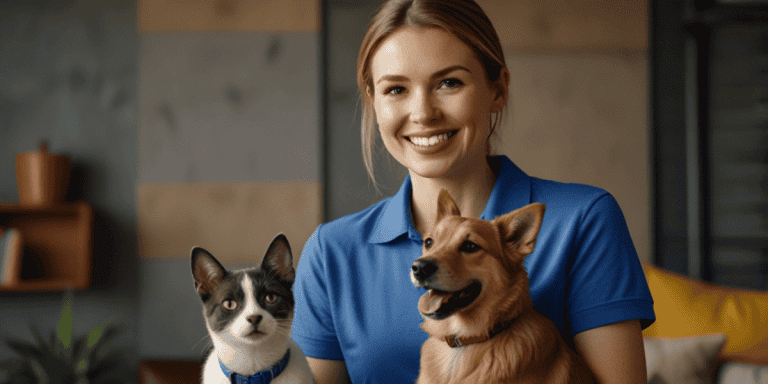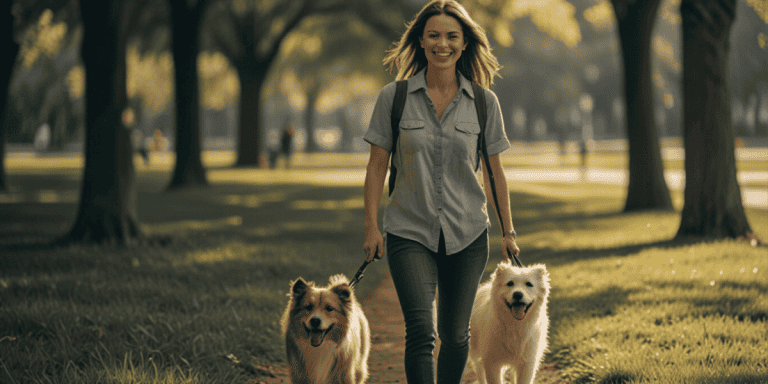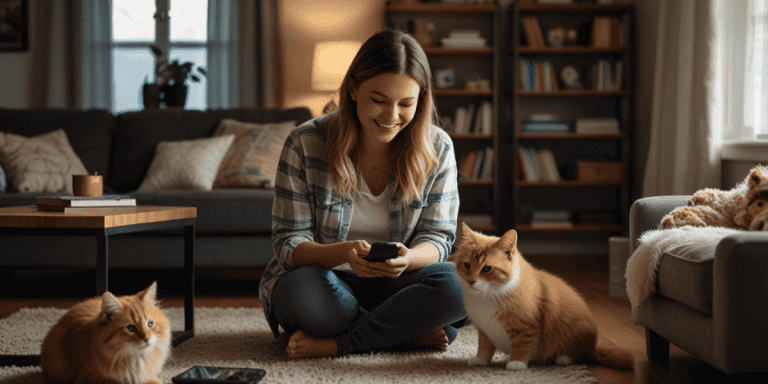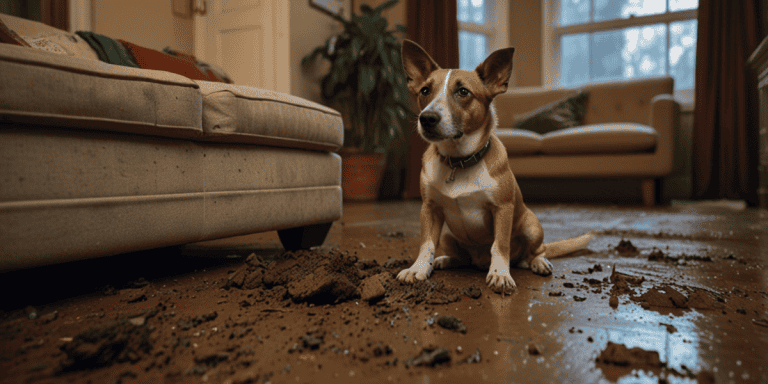Eco-Friendly Pet Sitting: How to Keep It Green in 2025
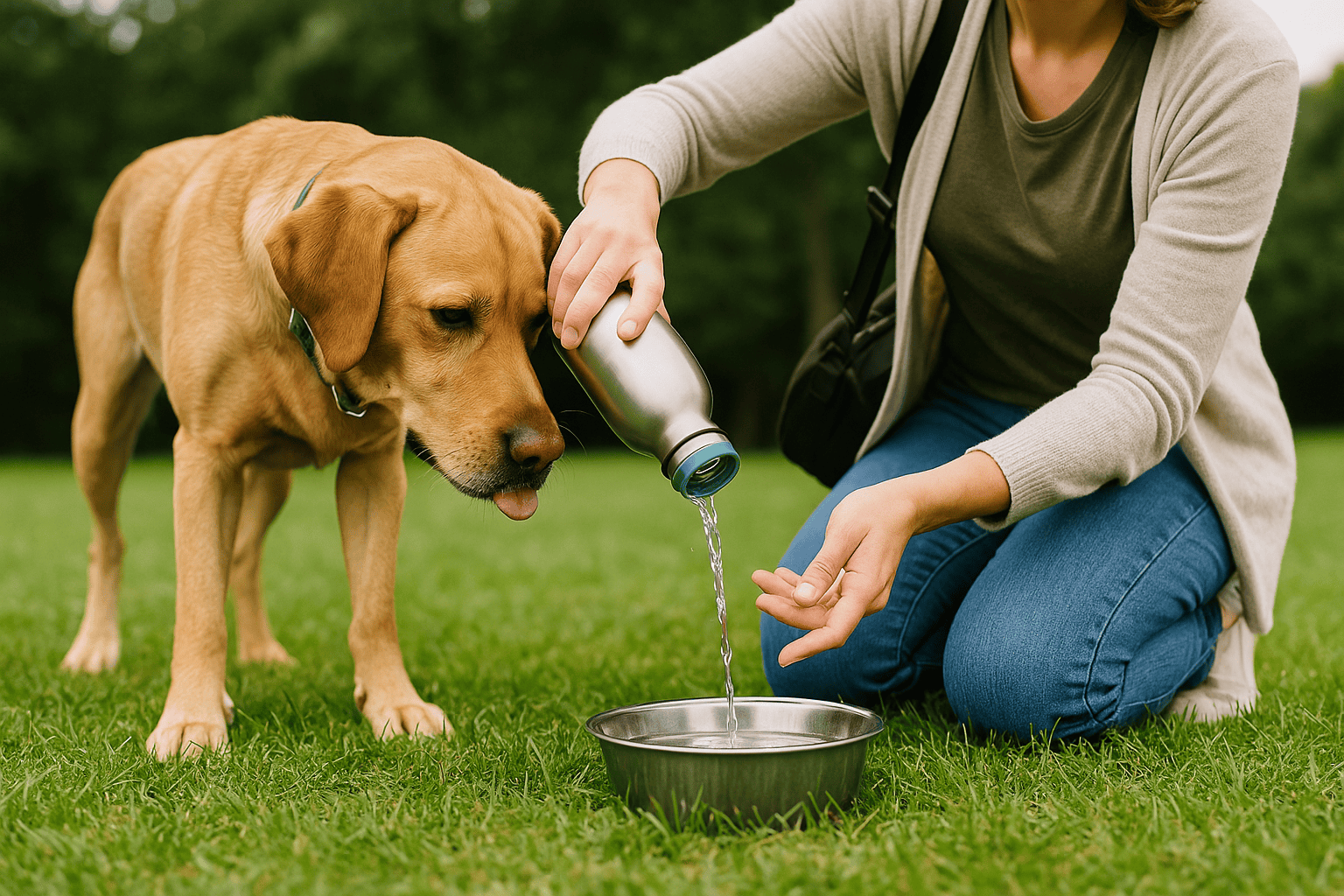
Small Shifts, Big Impact
Eco-friendly pet sitting and sustainability should go hand in hand — but most sitters don’t realise how easy it is to make greener choices. In fact, if just one in five pet sitters switched to reusable cleaning products, we could cut out thousands of plastic bottles a year. That’s a lot of waste saved just by making one small change.
In this post, you’ll learn how to keep your pet-sitting business clean and green — without it costing the earth (literally). These tips are simple to put in place, and once they’re part of your routine, you won’t think twice about them.
Want to know more about the ins and outs of pet sitting in general? Check out this ultimate guide!
Use Sustainable Pet Products

Many pet products are made with plastics, chemicals and packaging that can’t be recycled. Over time, these everyday items add up to a surprising amount of waste — especially when you’re using them across multiple clients. Cheap plastic toys, synthetic shampoos, and standard poo bags often end up in landfill or break down into microplastics. The truth is, most of it’s completely avoidable.
Choose compostable poo bags: Standard plastic bags can take hundreds of years to break down. Compostable ones like these do the same job and break down naturally — much better for the planet.
Swap to natural grooming gear: Shampoos, sprays, and wipes made with natural ingredients are not only safer for pets but also tend to come in recyclable or refillable packaging.
Pick better litter options: If you look after cats or small animals, opt for litter made from wood, paper or even tofu-based materials. Many are biodegradable and far less damaging than clay-based alternatives.
Ditch the Disposables
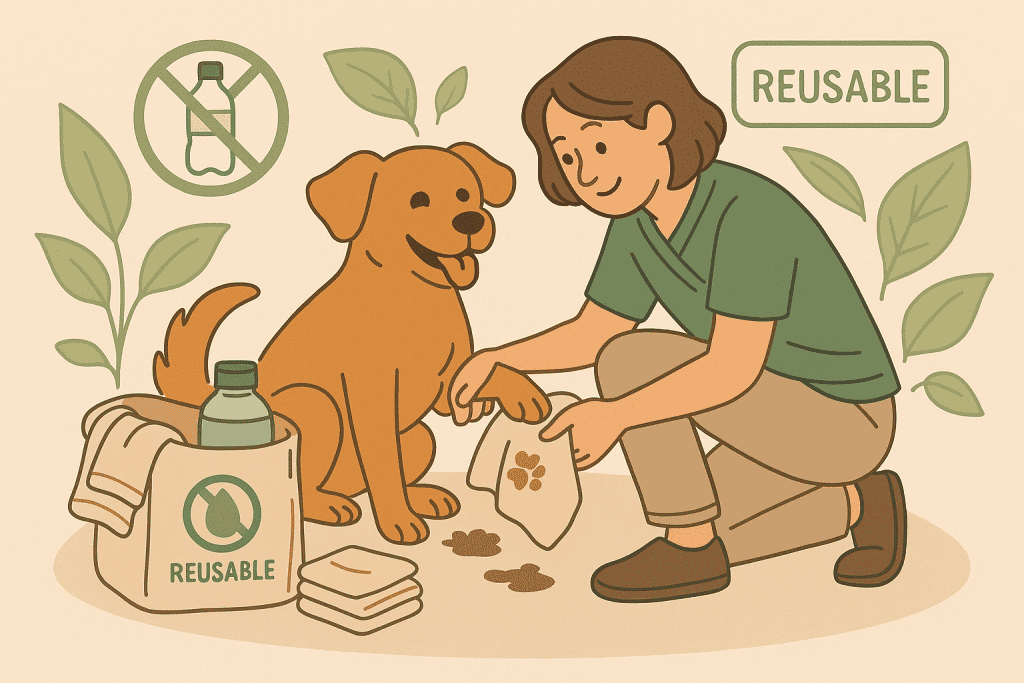
Single-use items might feel convenient, but they create a constant stream of waste that just doesn’t need to be there. Wipes, paper towels and plastic bottles get binned after one use — and when you multiply that by every visit, every pet, every week… it quickly adds up. Worse still, many of these products can’t be recycled or composted, so they just sit in landfill for years.
Use washable towels: Instead of grabbing a few sheets of kitchen roll for every muddy paw, keep a stash of reusable towels or microfibre cloths in your kit.
Bring reusable bowls: Carry your own collapsible water bowl for walks, and skip the single-use plastic bottles — a refillable flask does the trick.
Avoid disposable wipes: Many pet wipes contain plastic fibres and aren’t biodegradable. Reusable cloths with a bit of warm water do the job just as well.
Go Green on the Go
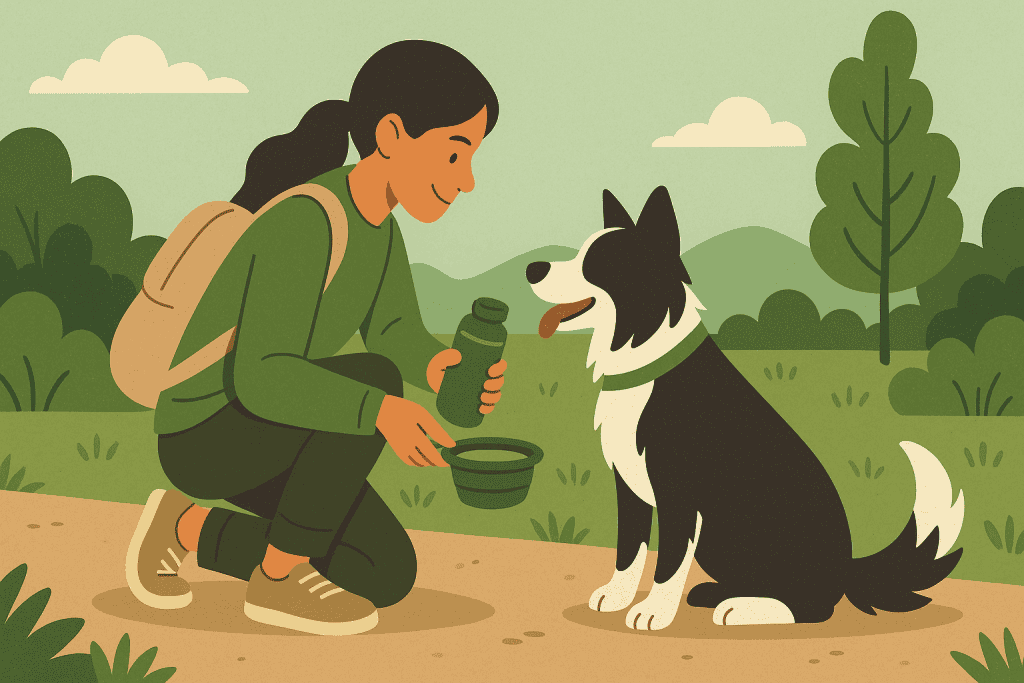
Transport is one of the biggest contributors to your carbon footprint as a pet sitter — especially if you’re driving short distances multiple times a day. Every solo trip in the car burns fuel, releases emissions, and adds to congestion. For local jobs, this isn’t just wasteful — it’s unnecessary. With a bit of planning, there’s usually a greener way to get there.
Walk or cycle where you can: Not every job will be in walking distance, but when it is, leave the car at home. It’s better for the air and gives you and the pets more exercise.
Batch your bookings: Try to group your clients by area to cut down on mileage. It saves time and fuel — both of which are precious if you’re busy.
Take public transport: For longer trips, hopping on the train or bus with your pet kit can be a lot greener than driving solo.
Clean Without Chemicals
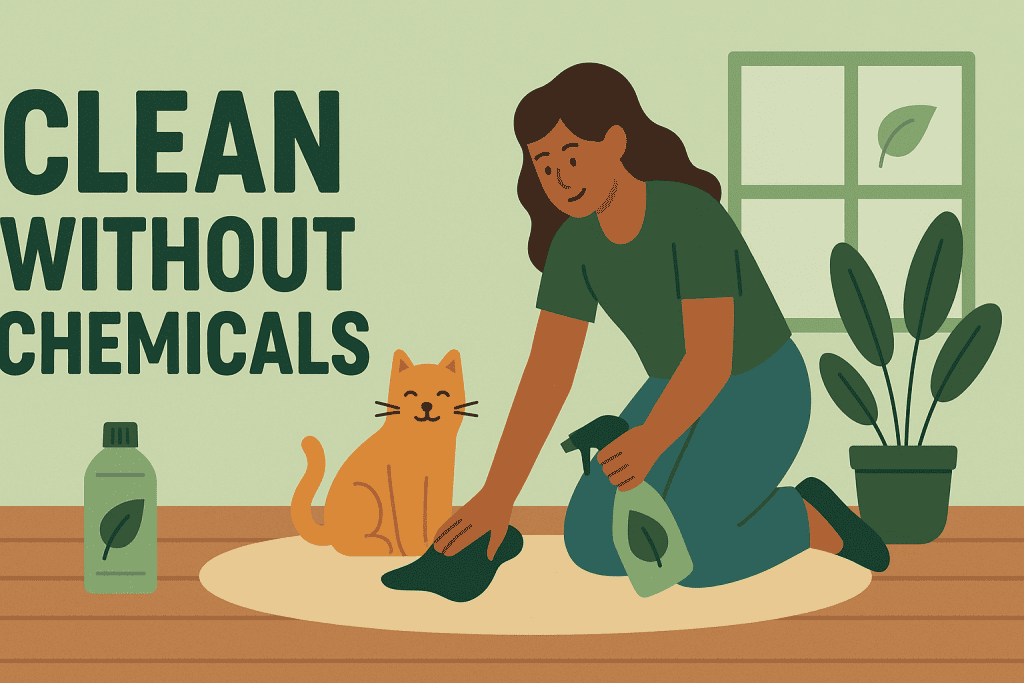
Harsh chemical cleaners might make things smell “fresh,” but they’re not good for pets — or the environment. Many contain ingredients that pollute waterways, harm wildlife, and even cause allergic reactions in sensitive animals. And once they’re rinsed down the drain or binned, those chemicals don’t just disappear. Natural alternatives are safer, cheaper, and work just as well.
Go natural with your cleaning: A mix of vinegar and bicarbonate of soda can tackle everything from smells to stains. It’s cheap, pet-safe, and cuts out the nasties.
Pick eco brands: When you do need store-bought cleaners, look for pet-safe brands that use biodegradable ingredients and recyclable packaging.
Make your own spray: You can whip up a simple surface cleaner with white vinegar, lemon juice, and water. It smells fresh and does the job without harsh fumes.
Reduce, Reuse, Recycle (for Real)
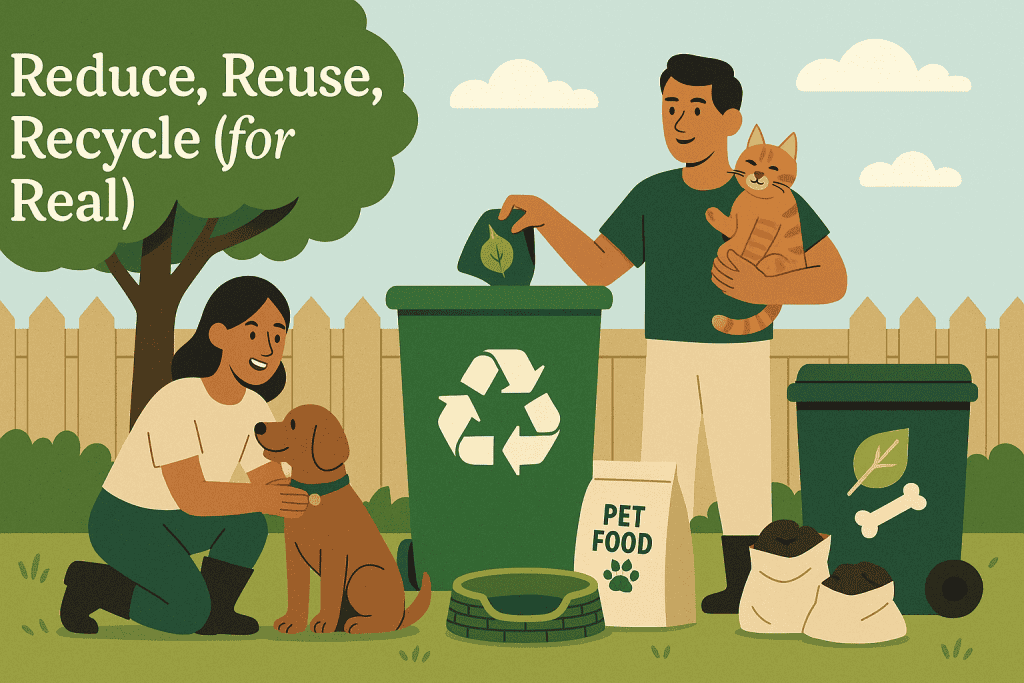
It’s easy to think of recycling as something we’ll get to later — but the truth is, most recyclable items never make it to the right bin. Old pet supplies often get thrown away when they could be reused or donated. And when your daily routine creates more waste than you’re managing, it chips away at the progress you are making. This is about taking small steps to do better with what you’ve got.
Set up a small recycling system: Keep a tote or crate in your car for cans, bottles and packaging you collect during the day. It’s a small habit that adds up.
Reuse containers and jars: Empty treat tubs, supplement jars, or spray bottles? Give them a rinse and use them again instead of binning them.
Donate old pet gear: If clients are chucking leads, bowls or beds, see if they’ll donate instead. Local shelters often need extras, and it keeps items out of landfill.
Involve Your Clients
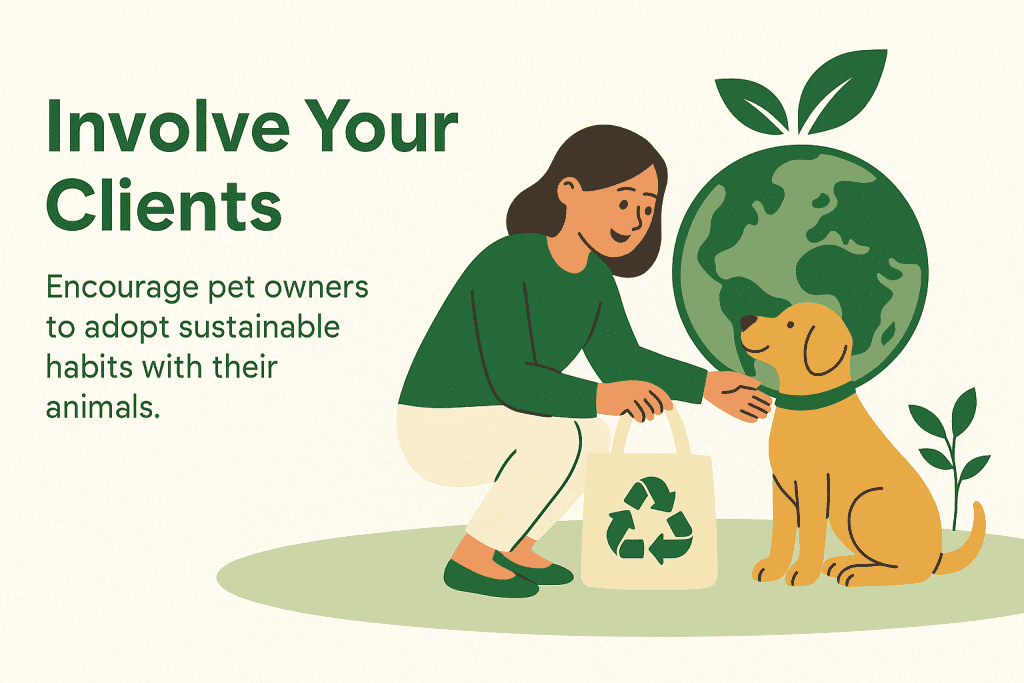
Eco-friendly pet care isn’t something you can do alone — not completely. If your clients are using harsh cleaners, buying wasteful supplies, or over-packaging food and treats, your efforts only go so far. That’s why it’s worth looping them in. Small changes in their habits can make a huge difference over time — and you might just inspire them to do better too.
Talk about your eco practices: Let people know that you’re making eco-friendly choices. It builds trust and shows you care about more than just the basics.
Offer composting if you can: Some sitters compost pet waste at home or through a local service. If that’s you, offer it as an option.
Share simple tips: A quick conversation or follow-up message with green tips helps spread the habit — and clients will remember you for it.
Final Thoughts: Eco-Friendly Pet Sitting Starts with You
You don’t have to be perfect — just being mindful about your choices is a brilliant start. The good news is, once these eco habits are part of your routine, they feel completely normal. Whether it’s swapping one product, walking more, or cutting down on waste, it all makes a difference.
Start small. Stick with it. The planet — and your clients — will thank you.

